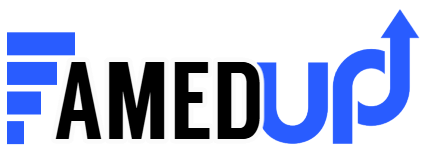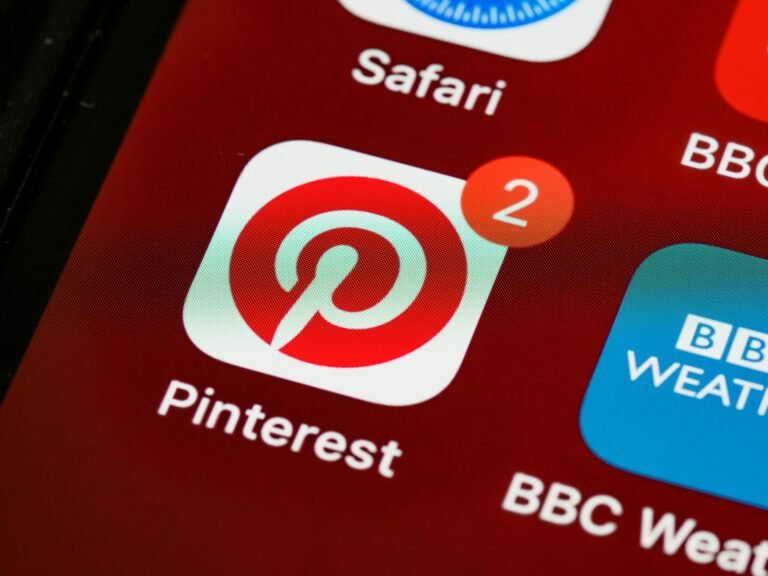1. The Strategic Value of Pinterest SEO in 2025
In the rapidly evolving landscape of digital marketing, Pinterest SEO has emerged as a critical growth lever for brands and businesses aiming to increase visibility and engagement on one of the internet’s most powerful visual search engines. Unlike traditional social media platforms, Pinterest functions primarily as a discovery and search platform, making Pinterest SEO essential for marketers who want their pins to be found by millions of users actively searching for ideas, products, and inspiration.

The Evolution of Pinterest as a Visual Search Engine
Pinterest has transformed dramatically over the years—from a simple image-sharing platform to an advanced visual search engine powered by sophisticated AI and machine learning technologies. Today, Pinterest SEO is no longer about keyword stuffing or superficial tactics; it requires a deep understanding of how Pinterest’s AI interprets visual content, context, and user intent to deliver highly relevant results. This evolution means that optimizing your pins and boards through cutting-edge Pinterest SEO strategies is crucial to stand out in a crowded digital space.
How Pinterest’s AI-Powered Algorithm Ranks Content Beyond Keywords
At the core of effective Pinterest SEO is the platform’s AI-driven ranking algorithm, which analyzes far more than just keywords. It evaluates the quality of visuals, user engagement signals, contextual relevance, and semantic relationships between pins and user queries. This means that successful Pinterest SEO demands an integrated approach—combining keyword optimization with compelling visuals and user-centric content to maximize discoverability and engagement.
Integrating Pinterest SEO into Your Holistic Digital Marketing Funnel
A sophisticated Pinterest SEO strategy doesn’t exist in isolation. It should be seamlessly integrated into your broader digital marketing funnel to drive brand awareness, traffic, and conversions. By aligning your Pinterest content with your overall SEO, social media, and content marketing efforts, you can create a cohesive ecosystem that amplifies your online presence. Leveraging Pinterest SEO effectively ensures your brand captures relevant audiences at various stages of their buyer journey—from inspiration to purchase—making Pinterest an indispensable channel in your marketing mix in 2025.
2. Advanced Keyword Research for Pinterest: Beyond Basics
Mastering Pinterest SEO starts with sophisticated keyword research that goes far beyond simple keyword lists. To truly dominate Pinterest’s search results, marketers need to harness advanced techniques—leveraging cutting-edge technologies and platform-specific insights. Here’s how to elevate your Pinterest keyword strategy with advanced methods that improve pin discoverability and engagement.
Utilizing Natural Language Processing (NLP) Tools for Pinterest Keyword Discovery
One of the most powerful tools in modern Pinterest SEO is Natural Language Processing (NLP). NLP tools analyze the way users naturally phrase their searches on Pinterest, helping you uncover long-tail keywords and conversational phrases that traditional keyword research might miss. By integrating NLP insights, you can optimize pin titles, descriptions, and board names with user-centric language that matches real search intent—driving more qualified traffic and engagement.
Mining Latent Semantic Indexing (LSI) Keywords Specific to Pinterest’s Visual Search
Pinterest’s AI algorithm increasingly relies on semantic search capabilities, making Latent Semantic Indexing (LSI) keywords essential to your Pinterest SEO toolkit. LSI keywords are contextually related terms that enrich your content’s relevance without keyword stuffing. By identifying and incorporating LSI keywords related to your main focus areas, you signal to Pinterest’s algorithm that your pins provide comprehensive answers—boosting your chances to appear in diverse, relevant searches.
Harnessing Pinterest Trends and Seasonal Data for Dynamic Keyword Optimization
Effective Pinterest SEO is also about timing. Pinterest Trends and seasonal data offer invaluable insights into what topics and keywords are gaining momentum on the platform. By analyzing these trends regularly, you can dynamically adjust your keyword targeting to align with current user interests and seasonal behaviors—ensuring your pins stay relevant and highly visible throughout the year.
Competitor Gap Analysis Using Pinterest-Specific SEO Tools
To outperform competitors on Pinterest, you need to know where the gaps and opportunities lie. Advanced Pinterest SEO involves using Pinterest-specific SEO tools to conduct competitor gap analysis—identifying keywords your competitors rank for that you don’t, and uncovering underutilized keywords in your niche. This strategic insight allows you to create targeted content that fills those gaps, capturing untapped traffic and strengthening your Pinterest presence.
3. Profile and Board Architecture Optimization for Maximum SEO Impact
A critical but often overlooked pillar of effective Pinterest SEO is the strategic optimization of your profile and board architecture. Pinterest’s algorithm assesses the overall structure of your account to determine topical relevance and authority. By implementing a taxonomy-driven and keyword-focused architecture, you create a powerful foundation that boosts your pins’ visibility and drives sustained growth.
Implementing a Taxonomy-Driven Board Structure to Signal Topical Authority
Building a well-organized, taxonomy-driven board structure is essential for demonstrating subject matter expertise to Pinterest’s search algorithm. Group your boards by clear themes or niches relevant to your business, using hierarchical relationships where possible. This signals topical authority, making Pinterest more likely to rank your pins higher for related queries. A focused board taxonomy also improves user experience, helping followers navigate your content intuitively.
Leveraging Brand and Niche Keywords in Profile Metadata for Enhanced Discoverability
Your Pinterest profile is more than a digital business card—it’s a prime real estate for Pinterest SEO. Incorporate high-impact brand and niche keywords naturally in your profile name and bio. Use terms that your target audience is actively searching for, balancing brand identity with keyword relevance. Optimized metadata on your profile increases your account’s discoverability, helping to attract followers interested in your niche before they even see individual pins.
Using Intent-Based Board Descriptions with Entity Recognition and Contextual Keywords
Board descriptions are powerful SEO signals that Pinterest uses to understand the intent and context behind your content. Craft intent-based descriptions by integrating entity recognition—identifying key concepts and topics related to your board theme. Layer these with contextual keywords that reflect the natural language your audience uses. This strategic approach aligns your boards with relevant search intents, making them more likely to surface in Pinterest search results.
Internal Cross-Linking Strategies Within Pinterest Boards for SEO Synergy
Just as internal linking benefits traditional website SEO, internal cross-linking within your Pinterest boards can create SEO synergy. Promote related boards and pins through descriptive comments, pin descriptions, and board collaborations to build a network of contextually relevant content. This interconnected structure signals to Pinterest that your account covers topics comprehensively, enhancing your overall SEO authority and helping your pins gain better ranking.
4. Pin-Level SEO: Crafting Pins That Rank and Convert
To excel at Pinterest SEO, optimizing pins at the individual level is crucial. Pinterest’s algorithm evaluates each pin not only on keywords but also on visual appeal, contextual relevance, and metadata. Crafting pins that both rank well and drive conversions requires a data-driven, multi-layered approach combining design, copywriting, and technical optimization.
Designing Pins Using Data-Driven Visual Elements Aligned with Pinterest’s Visual Algorithm
Pinterest’s visual algorithm prioritizes pins that engage users through compelling, high-quality imagery. Use analytics to identify the colors, styles, and formats that resonate most with your target audience. Incorporate clean layouts, readable fonts, and eye-catching graphics optimized for mobile viewing. Data-driven design increases user interaction—such as saves and clicks—which are key ranking factors in Pinterest SEO.
Semantic Copywriting for Pin Titles: Incorporating Conversational AI Patterns
Effective Pinterest SEO extends to the language used in pin titles. Utilize semantic copywriting techniques by incorporating natural, conversational AI patterns that mimic how users phrase queries. This approach enhances relevance and aligns your pins with voice search trends and long-tail keyword variations, improving discoverability and click-through rates.
Optimizing Pin Descriptions with Entity Extraction and Intent-Matching Keywords
Pin descriptions are critical for Pinterest’s algorithm to understand your content contextually. Use entity extraction to identify and embed key concepts related to your niche. Combine this with intent-matching keywords—phrases that reflect what users want to accomplish when searching—ensuring your descriptions directly answer user needs and boost Pinterest SEO performance.
Strategic Use of Hashtags in 2025: Balancing Reach and Relevance in Pinterest’s Ecosystem
Hashtags remain an important, yet nuanced, part of Pinterest SEO. In 2025, the focus is on balancing broad-reach hashtags with highly relevant, niche-specific ones. Use hashtags to categorize pins effectively without overstuffing, helping Pinterest’s algorithm accurately index and recommend your content to the right audiences.
Metadata Optimization for Pins: Leveraging ALT Text and Structured Data
Technical optimization also plays a role in advanced Pinterest SEO. Optimize your pins’ metadata by adding descriptive ALT text that accurately represents the image content, improving accessibility and search indexing. Additionally, implementing structured data markup on your website’s images (which Pinterest pulls for rich pins) enhances Pinterest’s ability to display detailed, accurate information, further improving your pins’ search rankings and user engagement.
5. Leveraging Rich Pins, Schema Markup, and Pinterest’s Advanced Metadata Features
For marketers aiming to maximize their Pinterest SEO potential, leveraging Pinterest’s advanced metadata tools—like Rich Pins and schema markup—is a game changer. These features enhance your pins with real-time, dynamic information that improves visibility, user engagement, and click-through rates by delivering richer, more relevant search results.
Implementing Product, Recipe, and Article Rich Pins for Enhanced SERP Features
Rich Pins come in several types—Product, Recipe, and Article—that automatically pull metadata from your website to display extra details directly on your pins. For Pinterest SEO, implementing the appropriate Rich Pin type ensures your content stands out with pricing, availability, ingredients, or article headlines, enhancing user trust and increasing engagement. Product Rich Pins, for example, showcase up-to-date pricing and stock info, which drives more qualified traffic and conversions.
Advanced Schema.org Integration to Boost Rich Pin Performance and Indexing
Behind Rich Pins is structured data, specifically Schema.org markup, embedded in your website’s code. To fully leverage Pinterest SEO, ensure your pages are equipped with advanced, validated Schema markup that aligns with Pinterest’s requirements for Rich Pins. This includes product details, article metadata, and recipe information. Proper integration not only powers Rich Pins but also improves how Pinterest indexes and ranks your content, making your pins more likely to appear in relevant search queries.
Monitoring Rich Pin Validation and Troubleshooting Common Errors
Successfully implementing Rich Pins requires ongoing monitoring to maintain Pinterest SEO benefits. Use Pinterest’s Rich Pin Validator tool regularly to check your metadata and ensure pins are pulling accurate information. Troubleshoot common errors such as missing fields, invalid markup, or crawl issues promptly. Keeping your Rich Pins validated and error-free guarantees enhanced pin appearance and stable SEO performance over time.
6. Algorithmic Engagement Signals: Optimizing Pin Activity and Interaction
Effective Pinterest SEO goes beyond optimizing pins for keywords and visuals—it requires understanding and leveraging Pinterest’s complex engagement signals. The platform’s algorithm evaluates various user interactions to determine the relevance and quality of your content. Optimizing for these signals is essential to boost pin visibility and accelerate growth.
Understanding Pinterest’s Engagement Metrics Beyond Likes and Saves
While likes and saves are important, Pinterest’s algorithm also heavily weighs other engagement metrics such as pin clicks, close-ups (when users zoom into a pin), and repins. These interactions signal higher user intent and interest, making your pins more likely to be promoted in search results and home feeds. Advanced Pinterest SEO strategies focus on encouraging these deeper forms of engagement by creating highly relevant, visually appealing pins that invite user interaction.
Algorithmic Weight of Freshness: Temporal SEO Strategies for Pin Publishing
Freshness is a critical ranking factor in Pinterest SEO. The algorithm prioritizes new and recently active pins, rewarding accounts that publish consistently. Temporal SEO strategies involve timing your pin releases to align with peak user activity and seasonal trends. By capitalizing on Pinterest’s freshness signals, you can increase the chances that your pins gain early traction and sustained visibility.
Automating Pin Scheduling with AI Tools to Maximize Engagement Windows
Maintaining optimal pinning frequency and timing is easier with AI-powered scheduling tools. These platforms analyze audience behavior patterns to identify ideal posting windows, automating your pin publishing for maximum engagement. Leveraging AI automation not only ensures consistent activity—a key Pinterest SEO factor—but also frees up time for strategic content creation and community building.
Community Engagement: Influencer Collaboration and Co-Branding on Group Boards
Active community engagement enhances your Pinterest SEO authority. Collaborating with influencers and participating in high-quality group boards expands your reach and drives authentic interaction. Co-branding pins on group boards amplifies exposure, increases repins, and generates valuable backlinks within Pinterest’s ecosystem. These tactics build social proof and trust signals, both of which are favored by Pinterest’s ranking algorithm.
7. Data-Driven Pinterest SEO Performance Analysis and Iteration
To master Pinterest SEO, continuous analysis and iterative optimization are vital. Leveraging advanced data tools and experimental frameworks enables marketers to refine their strategies based on real user behavior and platform insights, driving sustained growth and improved pin rankings.
Using Pinterest Analytics API for Granular Keyword and Content Performance Insights
The Pinterest Analytics API provides granular data on keyword performance, audience demographics, and pin engagement metrics. Advanced Pinterest SEO practitioners use this data to track how specific keywords and content types perform over time, identifying high-impact opportunities and underperforming areas. By integrating API insights into your analytics dashboard, you gain a comprehensive view of your SEO effectiveness and can make data-backed decisions.
Heatmapping and Behavioral Analytics to Understand Pin Interaction Patterns
Heatmapping tools and behavioral analytics allow you to visualize how users interact with your pins—where they click, pause, or scroll away. Understanding these patterns helps optimize pin design and placement to boost engagement metrics critical to Pinterest SEO, such as close-ups and click-through rates. Behavioral data also uncovers user intent signals that inform content strategy and keyword targeting.
A/B Testing Pin Visuals, Titles, and Descriptions Using Experimental SEO Frameworks
Implementing A/B testing for pin elements is an advanced Pinterest SEO tactic that drives incremental improvements. Test variations of pin visuals, titles, and descriptions against control versions to measure which combinations generate higher engagement and better ranking signals. Experimental SEO frameworks allow systematic testing and rapid iteration, increasing the precision and effectiveness of your Pinterest content.
Iterative SEO Strategy Development Using Predictive Modeling and Trend Forecasting
Using predictive modeling and trend forecasting tools enables marketers to anticipate shifts in Pinterest user behavior and emerging keyword trends. This foresight supports proactive SEO adjustments, keeping your content relevant and competitive. Iterative strategy development—driven by ongoing data analysis and predictive insights—ensures your Pinterest SEO remains agile and aligned with evolving platform algorithms and audience preferences.
Conclusion
Mastering Pinterest SEO in 2025 requires a multi-faceted approach that combines deep keyword research, strategic profile and board architecture, and meticulously crafted pins optimized for both the visual and algorithmic demands of the platform. Leveraging advanced features like Rich Pins, schema markup, and AI-driven scheduling tools can significantly enhance your content’s visibility and engagement. Moreover, data-driven analysis and continuous iteration empower marketers to stay ahead of evolving trends and algorithm updates. By integrating these advanced Pinterest SEO strategies into your broader digital marketing funnel, you unlock Pinterest’s full potential as a powerful visual search engine to drive targeted traffic, brand authority, and conversions.
Frequently Asked Questions (FAQs)
Q1: What makes Pinterest SEO different from traditional SEO?
Pinterest SEO focuses on optimizing visual content combined with keyword and metadata strategies, leveraging Pinterest’s unique AI-powered visual search engine, user engagement signals, and platform-specific features like Rich Pins.
Q2: How important are keywords in Pinterest SEO?
Keywords remain crucial, but Pinterest’s algorithm also considers semantic relevance, user intent, and engagement metrics. Advanced keyword research using NLP and LSI keywords is essential to align pins with natural search queries.
Q3: Can Rich Pins improve my Pinterest SEO?
Yes, Rich Pins provide additional metadata like pricing or article info directly on your pins, enhancing click-through rates and user trust—both of which positively impact Pinterest SEO rankings.
Q4: How often should I post pins to optimize for Pinterest SEO?
Consistency is key. Using AI-driven scheduling tools to publish pins during peak engagement windows maintains freshness, a significant factor in Pinterest’s ranking algorithm.
Q5: How can I measure the effectiveness of my Pinterest SEO strategy?
Utilize Pinterest Analytics and the Pinterest Analytics API for detailed performance data. Combining this with heatmapping, A/B testing, and predictive modeling provides comprehensive insights for continuous optimization.
Read Also: Pinterest Success: How Top Brands Build Followers & Saves


